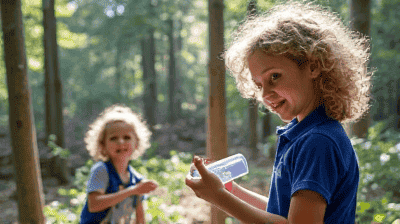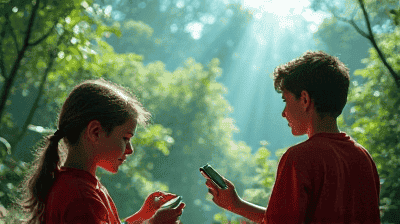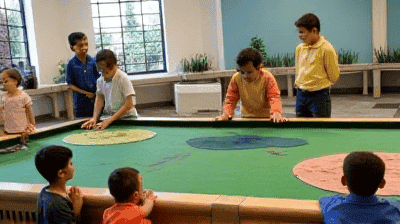
As global awareness of environmental issues continues to rise, schools around the world are beginning to shift their educational practices from traditional classroom-based learning to real-world sustainability projects. This change marks a significant transition from merely teaching students about sustainability in textbooks to engaging them in hands-on, practical applications that foster environmental stewardship and responsibility.
Sustainability in education encompasses teaching students the principles and practices that promote ecological balance, social equity, and economic viability. It involves engaging students in learning experiences that help them understand environmental challenges and develop the skills needed to address them. By promoting sustainability education, schools can empower students to become informed citizens who actively contribute to a more sustainable future.
Enhanced Learning Experience: Real-world projects provide students with the opportunity to apply theoretical knowledge in practical contexts, leading to deeper understanding and retention of information.
Critical Thinking and Problem Solving: Engaging in sustainability projects encourages students to identify problems, brainstorm solutions, and critically evaluate the outcomes of their actions.
Collaboration and Teamwork: Many sustainability initiatives involve collaboration among students, teachers, and community members, fostering teamwork and interpersonal skills.
Community Engagement: Sustainability projects often extend beyond the school environment, engaging communities in environmental efforts and promoting a sense of collective responsibility.
Empowerment: Students involved in real-world sustainability projects often feel a sense of ownership over their work, leading to increased motivation and commitment to environmental issues.

Objective: To teach students about sustainable agriculture, biodiversity, and healthy eating.
Implementation:
Benefits:
Objective: To minimize waste and promote responsible resource use.
Implementation:
Benefits:
Objective: To promote awareness of sustainable energy sources and their benefits.
Implementation:
Benefits:
Objective: To raise awareness about water scarcity and the importance of conservation.
Implementation:
Benefits:
Objective: To engage students in the restoration of local ecosystems.
Implementation:
Benefits:
The Edible Schoolyard Project, founded by chef Alice Waters in Berkeley, California, aims to integrate gardening and cooking into school curricula. The project provides students with hands-on experiences in food cultivation and preparation.
Implementation:
Impact:
The Green School in Bali is renowned for its innovative, environmentally sustainable curriculum that emphasizes experiential learning.
Implementation:
Impact:
The Eco-Schools program is an international initiative that encourages schools to implement sustainability practices and educate students about environmental issues.
Implementation:
Impact:

Before launching sustainability projects, schools need to assess their specific environmental needs and available resources. This may involve surveys to gauge interest among students and the community, as well as evaluations of the school's current environmental practices.
Involve students, teachers, parents, and community members in the planning process. Collaborating with local organizations and experts can provide additional resources and expertise, enhancing project success.
Integrate sustainability projects into the school curriculum by developing a framework that aligns with educational standards. This helps ensure that sustainability education is embedded in various subjects, fostering interdisciplinary learning.
Training teachers on sustainability education practices is crucial for successful implementation. Professional development workshops can equip educators with the knowledge and skills needed to lead sustainability projects effectively.
Begin with pilot projects that allow schools to test ideas on a smaller scale. These initial projects can provide valuable insights and help build momentum for broader sustainability initiatives.
Establish metrics to assess the effectiveness of sustainability projects. Collect data on student engagement, behavior changes, and environmental outcomes to evaluate the impact of the initiatives.
Recognize and celebrate the successes of sustainability projects within the school community. Highlighting achievements fosters a culture of environmental stewardship and motivates continued engagement.
Teachers play a critical role in advocating for sustainability education and implementing projects in schools. Their influence can inspire students to take action and develop a lifelong commitment to environmental stewardship.
Educators can model sustainable practices within the classroom by incorporating eco-friendly materials, reducing waste, and promoting resource conservation. By exemplifying these behaviors, teachers can inspire students to adopt similar habits.
Empowering students to take leadership roles in sustainability projects enhances engagement and fosters a sense of ownership. Encouraging student-led initiatives can help build confidence and develop skills in project management and collaboration.
Collaborating with local organizations, government agencies, and environmental groups can enhance the effectiveness of sustainability projects. These partnerships can provide valuable resources, expertise, and support for educators and students.

Many schools face budget constraints when it comes to launching sustainability projects. Securing funding can be a significant barrier to implementation.
Solution: Pursue grants and sponsorships from local businesses, non-profit organizations, and government programs that support educational initiatives focused on sustainability. Crowdfunding campaigns can also mobilize community support and generate resources.
Teachers often face time limitations in their curricula, making it difficult to find space for sustainability projects.
Solution: Integrate sustainability topics into existing subjects, allowing for interdisciplinary learning. Collaboration among teachers can also allow for joint projects, maximizing instructional time.
Some educators and community members may resist shifting towards sustainability practices, either due to a lack of awareness or fear of change.
Solution: Provide professional development and training on sustainability education, highlighting the benefits of engaging students in real-world projects. Share success stories from other schools to demonstrate the positive impact of sustainability initiatives.
By engaging students in real-world sustainability projects, schools play a pivotal role in shaping future generations of environmentally conscious citizens. These initiatives provide students with the skills and knowledge needed to address complex environmental issues.
Sustainability projects foster community engagement and collaboration, resulting in stronger bonds between schools and their neighborhoods. When schools involve local stakeholders in their initiatives, they promote a sense of shared responsibility for environmental stewardship.
Sustainable education aligns with the United Nations Sustainable Development Goals (SDGs), particularly Goal 4, which emphasizes quality education, and Goal 13, which focuses on climate action. Schools that implement sustainability projects contribute to the global movement for a more sustainable future.
The shift from traditional textbook learning to real-world sustainability projects represents a vital transformation in education. As schools engage students in hands-on experiences that address pressing environmental challenges, they equip future generations with the tools necessary to advocate for and implement sustainable solutions.
By fostering critical thinking, collaboration, and a sense of community responsibility, these initiatives contribute not only to individual student development but also to the broader mission of sustainability. As educators, students, and communities work together to champion sustainable practices, they take meaningful steps toward safeguarding the planet for future generations.